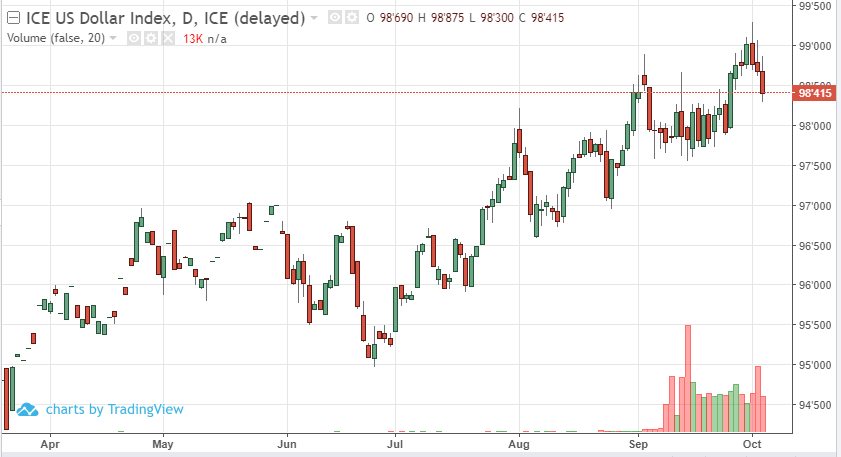
U.S. dollar futures are correcting lower this week after last week’s move to the upside. New highs were in place early this week, as the dollar continues to benefit from a relatively-strong U.S. economy. But the greenback was humbled on Tuesday when ISM manufacturing data was released at 47.8 vs expectations of 50! Anything below 50 is considered contractionary, and this was the weakest reading in 10 years. Then on Thursday, the ISM non-manufacturing number missed consensus as well, sending the dollar below 98.40. It is apparent that the U.S. is not immune to an economic slowdown. However, I believe the downside in the U.S. dollar is limited, as America remains relatively stronger than other developed economies (European PMIs were contractionary across the board).
Additionally, there is a shortage of dollar liquidity, evident in the action of the repo rate, at the same time demand for the greenback is as strong as ever. If the world economy continues to show down, the dollar is likely to catch a safe-haven bid. The trusty dollar is the currency of the world economy, and as the dominos begin to fall, demand for the USD will only grow. But a strong dollar is hurting U.S. producers, as foreign money is worth less, and U.S. goods are relatively more expensive. This will probably be reflected in Q3 earnings. The Fed’s hand will be forced when it comes to weakening the USD… but that is a tall task. Rate cuts are expected, but U.S. rates remain higher than those elsewhere in the world. Quantitative easing is a likely response to weakening economic conditions, but I believe that even QE will only weaken the dollar in the short-term, as increased supply will likely coincide with increased demand as contraction grips the world. Foreign currencies will remain depressed if dollar strength persists. But of all the major currencies, the Japanese yen is likely to fight back most successfully due to its safe-haven qualities.



